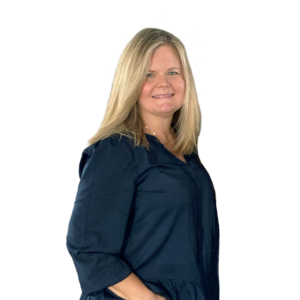Across-the-board savings with resident lifts
Savings-not only in insurance and worker’s compensation dollars, but in reduced problems for residents and staff-accrued in a major way with the advent of a modern safe-lifting program at Garfield Hts., Ohio’s, 156-bed Jennings Hall at Jennings Center for Older Adults. With a combination of staff training, new lift equipment (including ceiling lifts and electric beds), local foundation support, and academic research involvement, the program has seen several major “payoffs” in less than three years, including major reductions in injuries of all types (tables 1, 2) and costs related to those injuries (table 3). Along the way, the participants learned much about how new technology, used appropriately by an educated and committed staff, can positively impact resident care. Recently, Jennings’ Chief Operating Officer and Administrator Allison Salopeck explained this success in an interview with Long-Term Living Editor-in-Chief Richard L. Peck.
Time 1 | Time 2 | Reduction Rate | |
Resident Activity That Resulted in Injury | |||
lLifting or transferring | 16 | 4 | 75% |
Type of Injury | |||
Back strain | 15 | 3 | 80% |
Sprain | 1 | 1 | 0% |
Bruise | 1 | 0 | 100% |
The number of times in a month healthcare workers felt lifting or transferring a resident was “too much.” | 11 | 3 | 73% |
Time 1 | Time 2 | Reduction Rate | |
# of Employee “Injuries” Incident Reports | 6 | 2 | 67% |
# of Lost Work Days | 389 | 4 | 99% |
Time 1 | Time 2 | Reduction Rate | |
Paid claims (including reserves) related to lifting and transferring | $217,951 | $14,705 | 93% |
% of all paid claims (including reserves) related to lifting and transferring | 91% | 24% | 74% |
Workers compensation rate (per $100 of gross wages) | $4.41 | $2.78 | 37% |
Workers compensation insurance premium | $346,228 | $238,955 | 31% |
Modified work days | $14,326 | -0- | 100% |
Peck: How did Jennings get started with the new safe-lifting program in 2006?
Salopeck: It started with one of our board members, Carol Sedlak, a professor of nursing at Kent State University, who had been teaching the American Nursing Association’s Safe Patient Handling Module, but finding that students doing their clinicals were seeing something quite different in the real world. She said, “There is no safe way for a body to lift a body, so why shouldn’t we do things the right way?” Her involvement at the research level enabled us to get financial support from local foundations toward purchasing up-to-date lift equipment, which cost nearly $600,000. Another key to this support was that the program wasn’t just about the equipment-there were broader implications for staff training and resident care. We spent a lot of time and resources educating 175 nursing staff over seven months, using four hours of classroom instruction and four hours of competency testing, with each course lasting over six to eight weeks. And this is repeated with every new hire. Then, staff performance was enhanced by the type of equipment we installed.
Peck: Would you elaborate on that?
Salopeck: On the third floor of our facility, which houses residents with the most acute physical needs, we installed ceiling lifts in 48 resident rooms and bathrooms, 48 fast-rising high/low electric beds, and a half dozen sit-to-stand lifts. With ceiling lifts, of course, they’re readily available-there’s no need for the CNA to hunt for one when needed, and it provides full room and bathroom coverage. That availability is a huge factor in staff compliance with this program. Today we have a no-tolerance policy on manual lifting but, when there has been a problem, it is when staff have had to seek a mechanical lift down the hall or tried to gain nearly impossible access to the bathroom with this equipment. At times like that staff can think to themselves that they should just get the lift done, because they’ve always been able to handle lifting people-and sometimes they can and sometimes they can’t.
Peck: It’s been said, though, that lifts that suspend residents in the air can be seen as dehumanizing. Your thoughts?
Salopeck: I used to be of that school. As a nursing assistant for five years, I used to think, “Where’s the human touch with these lifts?” But, as I’ve observed their use over the years, I’ve concluded that they actually do the opposite-they provide an opportunity for staff and residents to build relationships. When you’re sweating and straining with two or three other aides to lift someone physically, you’re too focused on getting the job done safely to have time to chat with anyone. But with this equipment, which is very comfortable and moves smoothly and steadily, the staff person-or in our case, both staff persons, because we are cautious about this-can feel confident having a conversation with the resident while the process is under way.
Peck: Was installing the ceiling lifts an engineering challenge?
Salopeck: We use floor-to-ceiling wall-mounted brackets that support the cross bar and track. At first I was concerned we’d have a bunch of “garage door openers” in our rooms, but in fact they’re painted to blend in with the room to the point that they’re nearly invisible. And the sling itself is kept out of the way until needed.
Peck: Where do the electric beds come into this?
Salopeck: These are fast-motor models that move from lowest to highest position and vice versa in just 20 seconds, about half the time of the standard motor. Staff can adjust bed height to provide bedside cares comfortably without hunching over or otherwise straining their backs. I would say a little over half the facility has these beds by now-we are expanding their use as money becomes available-and we would like to outfit the entire building with them someday.
Peck: Any words of wisdom for facility administrators who might like to get started with a program of this type?
Salopeck: I would say that if you can’t do an entire floor of the facility with new equipment, as we did, then start by outfitting at least resident bathrooms with ceiling lifts-or, if not every bathroom, at least the common bathing areas. I say that because the greatest initial impact of our program was on about a half-dozen residents who had never been able to use the bathroom and had been using bedpans or incontinence products for long periods of time. The impact of the lifts on their quality of life was dramatic, and justified everything we had done to get the program up and running. If I were looking for a way to get started, that’s where I would begin.
Allison Salopeck can be reached at (216) 581-2900, or allison.salopeck@jenningscenter.org, or visit https://www.jenningscenter.org. To send your comments to the editors, e-mail 2peck0409@iadvanceseniorcare.com.
I Advance Senior Care is the industry-leading source for practical, in-depth, business-building, and resident care information for owners, executives, administrators, and directors of nursing at assisted living communities, skilled nursing facilities, post-acute facilities, and continuing care retirement communities. The I Advance Senior Care editorial team and industry experts provide market analysis, strategic direction, policy commentary, clinical best-practices, business management, and technology breakthroughs.
I Advance Senior Care is part of the Institute for the Advancement of Senior Care and published by Plain-English Health Care.
Related Articles
Topics: Articles , Clinical












